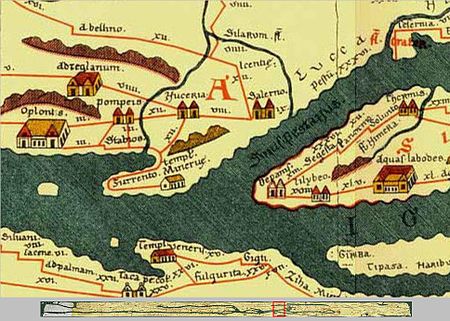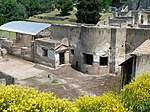Oplontis
1974 archaeological discoveries70s disestablishments in the Roman Empire79 disestablishmentsArchaeological sites in CampaniaBuildings and structures in the Metropolitan City of Naples ... and 16 more
Cities and towns in CampaniaCoastal towns in CampaniaDestroyed citiesFormer populated places in ItalyNational museums of ItalyPompeii (ancient city)Poppaea SabinaPopulated places disestablished in the 1st centuryPopulated places established in the 1st millennium BCPre-Roman cities in ItalyRoman sites of CampaniaRoman towns and cities in ItalyRuins in ItalyTorre AnnunziataTourist attractions in CampaniaWorld Heritage Sites in Italy

Oplontis is an ancient Roman archaeological site located in the town of Torre Annunziata, south of Naples in the Campania region of southern Italy. The excavated site comprises two Roman villas, the best-known of which is Villa A, the so-called Villa Poppaea. Like the nearby towns of Pompeii and Herculaneum, Oplontis was buried in ash during the volcanic eruption of Mount Vesuvius in 79 AD. However, the force of the eruption was even stronger than at these cities as not only roofs collapsed, but walls and columns were broken and pieces thrown sideways.
Excerpt from the Wikipedia article Oplontis (License: CC BY-SA 3.0, Authors, Images).Oplontis
Via Sepolcri,
Geographical coordinates (GPS) Address Nearby Places Show on map
Geographical coordinates (GPS)
| Latitude | Longitude |
|---|---|
| N 40.757 ° | E 14.453 ° |
Address
Scavi archeologici di Oplonti
Via Sepolcri 1
80058 , Rione Murattiano
Campania, Italy
Open on Google Maps










